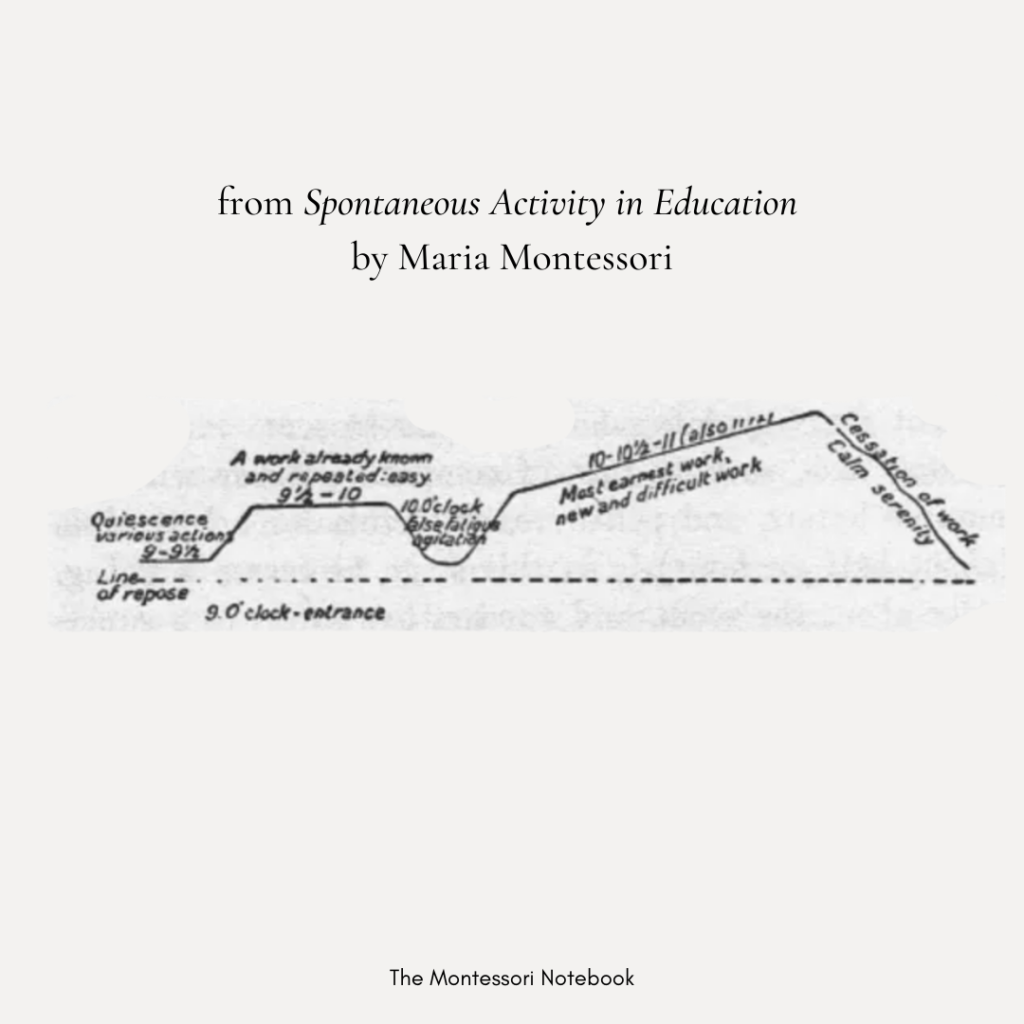What is false fatigue in Montessori?
I love this graph from from Spontaneous Activity in Education by Maria Montessori. What you’ll see is a 3-hour work cycle in a classroom in (I believe) a 3-6 classroom.

In this graph the children arrive at 9am. For the first 30 minutes you have the children arriving, settling in, greeting and observing each other. Then from 9:30 to 10am you see the children often selecting work they know already, an easier work.
Around 10am you see a dip – this is “false fatigue.” This is where the class can be a little unsettled, marked on the graph as “agitation.” A child might want to use the toilet, there may be a feeling of unrest and distraction and we may feel like we want to round them up to read a book, sing a song and control the energy.
The wise Montessori teacher knows and observes (stepping in only where a child might hurt themselves, another child or the environment) because they know that after this false fatigue we see some of the deepest work of the session – marked on the graph “most earnest work, new and difficult work.”
The end of the graph the work slowly comes to a stop and I love how it is marked “calm serenity.” When a child feels satisfied, challenged, and peaceful, they have that hallmark calm of a Montessori classroom.
So what can we do with this information?
I’m curious! Take some time to observe a morning at home:
- do you see something similar happen in your home?
- do you observe false fatigue?
- if so, can you sit out the chaos of the “false fatigue” to see them come to some of their deepest work of the morning?
- does this happen at other times of day too?
Note: For a toddler this may be a shorter work cycle of around 2 hours

Simone Davies has more than 20 years’ experience as an AMI Montessori educator. Simone is the author of “The Montessori Toddler” and co-author of “The Montessori Baby” and “The Montessori Child” books, comprehensive guides to raising children in a Montessori way. She currently runs parent-child Montessori classes in Amsterdam at her school Jacaranda Tree Montessori. She also has a popular blog, instagram and podcast “The Montessori Notebook” and is mother to two young adults.